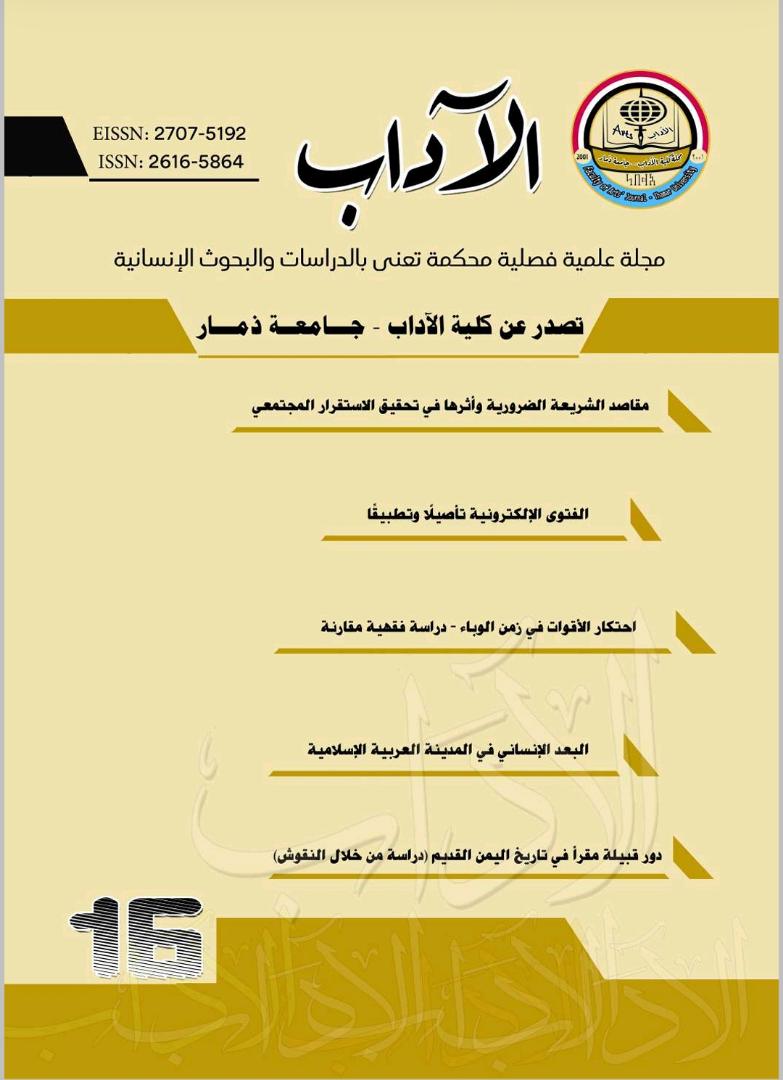The Role of 'Maqra' Tribe in the Old History of Yemen: A study through Inscriptions
DOI:
https://doi.org/10.35696/.v1i16.675Keywords:
Ans, Study, Maqra, Samaan, Bani YahfraAbstract
The research seeks to reveal the political and military role of the Maqra tribe in the period between the 7th BC. and the 6th century AD. The study is divided into: introduction, show, and conclusion. The study hasr evealled a number of results, the most important of which are: the tribe of Maqra as one of the tribes loyal to the Sabaean state, from the 7th c (BC) - at least - until the beginning of the second century AD. It was, at the beginning of the first century AD, as one of the tribes that entered within the framework of the Himyarite alliance together with Alaan Bin Yafra`who had a prominent role in consolidating the unity between Saba and Bani Dhi Raydan Al-Himyarites. Alaan Bin Yafra`was a representative of the Al-Raydanids - the Himyarites, during the inauguration of the Shabaean king Dhamar Ali Watar Hanaman, the king of Shaba and Dhi Raydan, at Jabal Al-Loud in the Al-Jawf region. At the beginning of the second century AD, it was one of the Himyarite tribes that announced their transformation from subordination to Saba to loyalty and obedience to the sons of Dhi Raydan. They switched from the Al-Adhwayah to the monarchs, and they played a clear role during the Shabean - Dhi Raydan Struggle.Downloads
Download data is not yet available.
Downloads
Published
2020-09-01
How to Cite
Al-Bahri, A. A. A. (2020). The Role of ’Maqra’ Tribe in the Old History of Yemen: A study through Inscriptions. Journal of Arts, 1(16), 466–499. https://doi.org/10.35696/.v1i16.675
Issue
Section
1
License
Copyright (c) 2021 عايض أحمد عتيق البحري (مؤلف)

This work is licensed under a Creative Commons Attribution 4.0 International License.
Copyright and Licensing
For all articles published in journal, copyright is retained by the authors. Articles are licensed under an open access Creative Commons CC BY 4.0 license, meaning that anyone may download and read the paper for free. In addition, the article may be reused and quoted provided that the original published version is cited. These conditions allow for maximum use and exposure of the work.



